Which is the Best Image?
All are invited to leave a comment letting us know which of today’s six featured images they like best, and why they made their choice.
Thanks for all the comments on the Black Vulture images in yesterday’s blog post. The consensus pick was Image #4 with the interesting background. My pick was Image #2, the vertical with the somewhat crazy flight pose.
What’s Up?
On Monday morning, I enjoyed another great photo session at ILE. It began on the pier with 321 blurs. Those included eight keepers after the first edit. I took a few snaps of the eagle before and after the sun hit the nest. I am pretty sure, but not positive, that the bird was feeding a chick … Next up was a Cattle Egret on a piling at the boat ramp dock in super-sweet early morning butter light. I kept nine of 96. Each featured a lovely green background. When something spooked the egret, I followed the movement and I saw three Killdeer on the boat ramp in the shade of my SUV. Two of them bathed. In just 2 minutes 18 seconds, I created 269 images; 23 of those survived the first cut. Then I drove to the parking circle to check out The Perch. On the way, I saw two cranes atop the small knoll just to the north. I positioned the car on sun angle and working off the BLUBB, I made a bunch of ordinary images at 840mm with the 600mm f/4, the 1.4X TC, and the a1. Then things got really exciting. In all, I created 482 images of the cranes on the rise. Keep reading below to learn what happened next.
Sunset on Monday was another cloudy bust. Today is Tuesday 11 January 2022. Clearing skies with a north wind are in the forecast. I will get down to the lake for at least a while. Wherever you are, and whatever you are doing, I hope that you too have a great day. This blog post took more than three hours to prepare (including the time spent on the six image optimizations) and makes 62 consecutive days with a new one.
Please remember that you can find some great photo accessories (and necessities, like surf booties!) on Amazon by clicking on the Stuff tab on the orange/yellow menu bar above. On a related note, it would be extremely helpful if blog-folks who, like me, spend too much money on Amazon, would get in the habit of clicking on the Amazon logo link on the right side of each blog post when they shop online. As you might expect, doing so will not cost you a single penny, but would be appreciated tremendously by yours truly. And doing so works seamlessly with your Amazon Prime account.
Please remember that if an item — a Delkin flash card, or a tripod head — for example, that is available from B&H and/or Bedfords, is also available in the BAA Online Store, it would be great, and greatly appreciated, if you would opt to purchase from us. We will match any price. Please remember also to use my B&H affiliate links or to save 3% at Bedfords by using the BIRDSASART discount code at checkout for your major gear purchases. Doing either often earns you free guides and/or discounts. And always earns my great appreciation.
Sony Alpha 1 Bodies in Stock at Bedfords/free card offer!
Steve Elkins of Bedfords let me know recently that he had several Sony a1 bodies in stock. If one of them has your name on it, please click here and be sure to enter the BIRDSASART coupon code check the box for free shipping to enjoy free Second Day Air Fed-Ex. Right now, in lieu of the 3% credit refunded to the card you used for your purchase, you will receive a Sony 160GB CFexpress Type A TOUGH Memory Card, a $399.99 value!
Brand New and As-Good-As-Ever Bedfords BAA Discount Policy
Folks who have fallen in love with Bedfords can now use the BIRDSASART coupon code at checkout to enjoy a post-purchase, 3% off-statement credit (excluding taxes and shipping charges) on orders paid with a credit card. The 3% credit will be refunded to the card you used for your purchase. Be sure, also, to check the box for free shipping to enjoy free Second Day Air Fed-Ex. This offer does not apply to purchases of Classes, Gift Cards, or to any prior purchases.
Money Saving Reminder
Many have learned that if you need a hot photo item that is out of stock at B&H and would like to enjoy getting 3% back on your credit card along with free 2nd Day Air Fed-Ex Air shipping, your best bet is to click here, place an order with Bedfords, and enter the coupon code BIRDSASART at checkout. If an item is out of stock, contact Steve Elkins via e-mail or on his cell phone at (479) 381-2592 (Central time). Be sure to mention the BIRDSASART coupon code and check the box for Free Shipping. That will automatically upgrade to free 2nd Day Air Fed-Ex. Steve has been great at getting folks the hot items that are out of stock at B&H and everywhere else. The waitlists at the big stores can be a year or longer for the hard to get items. Steve will surely get you your gear long before that. For the past year, he has been helping BAA Blog folks get their hands on items like the SONY a 1, the SONY 200-600 G OSS lens, the Canon EOS R5, the Canon RF 100-500mm lens, and the Nikon 500mm PF. Steve is personable, helpful, and eager to please.
Important Note
As an Amazon Associate, I earn a small percentage when you purchase from Amazon after using any of the Amazon links on the blog (including the logo-link immediately above). My link works with Amazon Prime and using it will not cost you a single cent. Huge thanks, BTW 🙂
Please Remember Also
Please, if you enjoy and learn from the blog, remember to use one of my two affiliate programs when purchasing new gear. Doing so just might make it possible for me to avoid having to try to get a job as a Walmart greeter and will not cost you a single penny more. And if you use Bedfords and remember to enter the BIRDSASART code at checkout, you will (still!) save 3% on every order and enjoy free second-day air shipping. In these crazy times — I lost about fifty thousand dollars in income due to COVID 19 — remembering to use my B&H link or to shop at Bedfords will help me out a ton and be greatly appreciated. Overseas folks who cannot order from the US because of import fees, duties, and taxes, are invited to help out by clicking here to leave a blog thank you gift if they see fit.


Gear Questions and Advice
Too many folks attending BAA IPTs and dozens of photographers whom I see in the field and on BPN, are–out of ignorance–using the wrong gear, especially when it comes to tripods and more especially, tripod heads… Please know that I am always glad to answer your gear questions via e-mail. If you are desperate, you can try me on my cell at 863-221-2372. Please leave a message and shoot me a text if I do not pick up.
|
|
|
This image was created on 10 January 2022 at Indian Lake Estates. Working from the front seat of my SUV, I used the BLUBB-supported Sony FE 600mm f/4 GM OSS lens with the Sony FE 1.4x Teleconverter, and The One, the Sony Alpha 1 Mirrorless Digital Camera). ISO 800. The exposure was determined using Zebra technology with ISO on the rear wheel: 1/1250 sec. at f/5.6 (wide open) in Manual mode. AWB at 8:06:41am on a mostly sunny morning. Tracking: Spot S AF-C performed perfectly. Be sure to click on the image to enjoy a higher-res version. Image #1: Sandhill Crane female inviting copulation |
The Invitation
The two cranes began walking down the back side of the small hill. One of them leaned forward, almost as if bowing. This indicates one of two things:
A- The bird is about to take flight
B- The female is beginning a sequence of behaviors inviting the male to copulate.
In this case it was B. The bird that had leaned forward had been the female. She walked toward me and spread her wings low and to the side as you see in Image #1. This was a clear invitation to the male to copulate. I was vertical at 840mm. The moment that I saw the male walking up behind the female, I knew that he had accepted. Even as I made a few images, I knew that I would need to remove the teleconverter and switch from vertical to horizontal ASAP to avoid clipping wings and more.
|
|
|
This image was created on 10 January 2022 at Indian Lake Estates. Working from the front seat of my SUV, I used the BLUBB-supported Sony FE 600mm f/4 GM OSS lens and The One, the Sony Alpha 1 Mirrorless Digital Camera). ISO 800. The exposure was determined using Zebra technology with ISO on the rear wheel: 1/2000 sec. at f/4 (wide open) in Manual mode. AWB at 8:06:58am on a mostly sunny morning. AF Method unknown, but whatever it was, it performed amazingly well. Be sure to click on the image to enjoy a higher-res version. Image #2: Sandhill Crane pair copulating, male with foot raised over female’s head |
The Good News and the Bad News
Faced with a rapidly-developing, pretty-much-perfect situation, my heart was pounding. You might think it strange that after 38 years of bird photography I could still get so excited. It took me 16 seconds to remove the TC, remount the camera body, turn the lens to horizontal on the BLUBB, and adjust the exposure (albeit incorrectly). During the time that it had taken me to remove the TC, the male had mounted the female. I noted way too many Zebras, so I increased the shutter speed. But I increased it only two clicks from 1/1250 sec. to 1/2000 sec. As the aperture went from f/5.6 to f/4 when I removed the TC, I should have gone three clicks to 1/2500 sec. As a result of this error, all of the raw files were over-exposed to varying degrees, some by as much as 1/3 stop. The over-exposures were all in the bright tones of the under-primary feathers. I used the knowledge gained from working with RawDigger for the past three years — all of the Ov-Exp pixels were in the G channel — and the techniques detailed in the Saving the Whites Video to successfully process the six images featured here today.
|
|
|
This image was created on 10 January 2022 at Indian Lake Estates. Working from the front seat of my SUV, I used the BLUBB-supported Sony FE 600mm f/4 GM OSS lens and The One, the Sony Alpha 1 Mirrorless Digital Camera). ISO 800. The exposure was determined using Zebra technology with ISO on the rear wheel: 1/2000 sec. at f/4 (wide open) in Manual mode. AWB at 8:06:58am on a mostly sunny morning. AF Method unknown, but whatever it was, it performed amazingly well. Be sure to click on the image to enjoy a higher-res version. Image #3: Sandhill Crane pair copulating |
Pedal to the Metal
Because I had to remove the TC, I was a bit late to the party. From there, it was all over in less than four seconds. I do not remember releasing pressure on the shutter button. There were 87 images in the sequence. I opted to keep only 13. I clipped a wing in only two images; all the rest were quite excellent. But you simply cannot keep all the good ones with the a1.
Note: Images #2-5 are all quite similar, but there are small differences in each photo the led me to keep this or that image and to discard many others. The determining factors had to do primarily with differing head and wing (and even foot) positions, mostly with respect to the male bird, the one on top 🙂
|
|
|
This image was created on 10 January 2022 at Indian Lake Estates. Working from the front seat of my SUV, I used the BLUBB-supported Sony FE 600mm f/4 GM OSS lens and The One, the Sony Alpha 1 Mirrorless Digital Camera). ISO 800. The exposure was determined using Zebra technology with ISO on the rear wheel: 1/2000 sec. at f/4 (wide open) in Manual mode. AWB at 8:06:59am on a mostly sunny morning. AF Method unknown, but whatever it was, it performed amazingly well. Be sure to click on the image to enjoy a higher-res version. Image #4: Sandhill Crane pair copulating, male’s wings raised for balance |
AF Method
AF Method unknown, but whatever it was, it performed amazingly well.
On my gripped a1, I have three AF Methods enabled. But only two are enabled on my other a1. With the camera set up properly, the camera remembers both the AF Method and the position of the point or zone when you switch from vertical to horizontal. I am 100% sure that for Image #1, the vertical, I was using Tracking: Spot S. But in all the excitement, I am not sure if I was using that or Tracking: Zone. But it did not matter: every one of the 87 images in the copulation series was sharp.
|
|
|
This image was created on 10 January 2022 at Indian Lake Estates. Working from the front seat of my SUV, I used the BLUBB-supported Sony FE 600mm f/4 GM OSS lens and The One, the Sony Alpha 1 Mirrorless Digital Camera). ISO 800. The exposure was determined using Zebra technology with ISO on the rear wheel: 1/2500 sec. at f/4 (wide open) in Manual mode. AWB at 8:07:01am on a mostly sunny morning. AF Method unknown, but whatever it was, it performed amazingly well. Be sure to click on the image to enjoy a higher-res version. Image #5: Sandhill Crane pair copulating, male biting head of female |
More Fine-Feather Detail?
After clicking on each image to view the high-res version, please leave a comment if you think that one of today’s images shows more fine-feather detail than the other five. If yes, which one. If they all look the same to you, you are invited to leave a comment stating that. Your answer will help me out quite a bit.
|
|
|
This image was created on 10 January 2022 at Indian Lake Estates. Working from the front seat of my SUV, I used the BLUBB-supported Sony FE 600mm f/4 GM OSS lens and The One, the Sony Alpha 1 Mirrorless Digital Camera). ISO 800. The exposure was determined using Zebra technology with ISO on the rear wheel: 1/2500 sec. at f/4 (wide open) in Manual mode. AWB at 8:07:01am on a mostly sunny morning. AF Method unknown, but whatever it was, it performed amazingly well. Be sure to click on the image to enjoy a higher-res version. Image #6: Sandhill Crane pair copulating, male dismounting |
The Dismount
All good things must come to an end. To dismount, the male stepped over its mate. Less than five minutes after driving away from the knoll, I was about five seconds too late another pair of cranes copulated on the South Peninsula. Let’s hope that there are lots of crane chicks this season.
|
|
The Saving the WHITEs (and lots more!) Video image |
The Saving the Whites (and lots more!) Video
My two biggest challenges when optimizing images are getting the BLUEs just right, and restoring detail to the WHITEs and highlights of properly exposed raw files. There are four things that I do to accomplish the latter. All are covered in detail in this 21+ minute video, along with a dirty trick to try if the first four do not work perfectly. Sit with me at my laptop as I teach you how to save the WHITEs. I begin with the raw conversions of two different raw files, today’s featured Snowy Owl image, and Joe Usewicz’s spoonbill image that was featured in the Extraordinary Over-Exposed (?) Spoonbill/Saving the WHITEs Optimization blog post here.
In addition to learning how to save the WHITEs (in both images), you will learn how to expand canvas using the amazingly convenient Content-Aware Crop Tool, to set the White Balance (color temperature), to set the WHITE and BLACK points, see Digital Eye Doctor and RawDigger in action, learn to make a Color Range Selection, and lots more.
To purchase your copy of the Saving the Whites Video (and lots more!) video, you can send a PayPal for $37.00 to us at birdsasart@verizon.net, call Jim in the office at 863-692-0906 with your credit card in hand, or visit the item in the BAA Online store by clicking here.
After clicking on each image, check out the nice detail in the white face of the owl in the optimized version (Image #1), with the virtually absent detail in the face of the owl in the Photo Mechanic screen capture (Image #1A). As I have been saying here often for two decades, properly exposed raw files will often appear washed out with little detail in the highlights …
Typos
With all blog posts, feel free to e-mail or to leave a comment regarding any typos or errors.


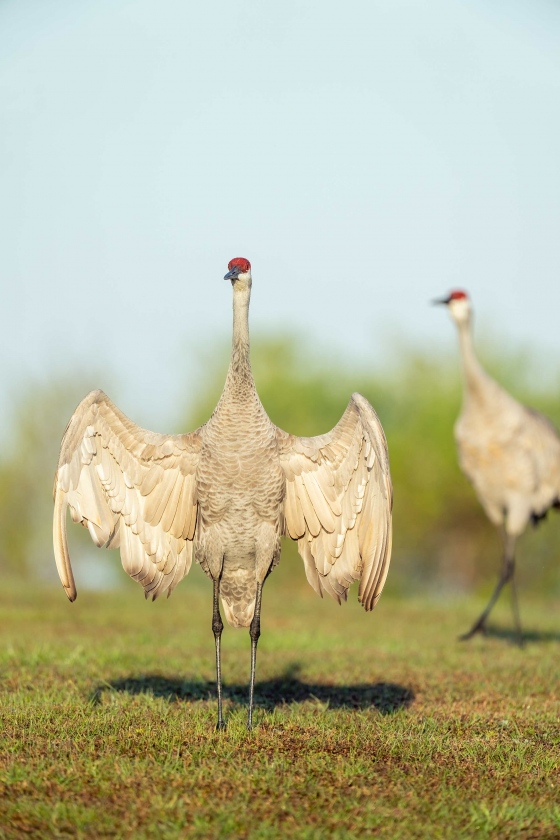
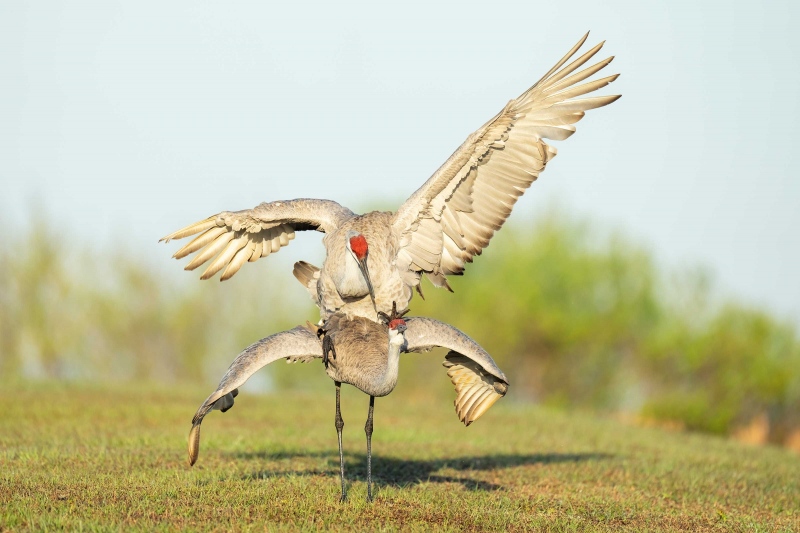
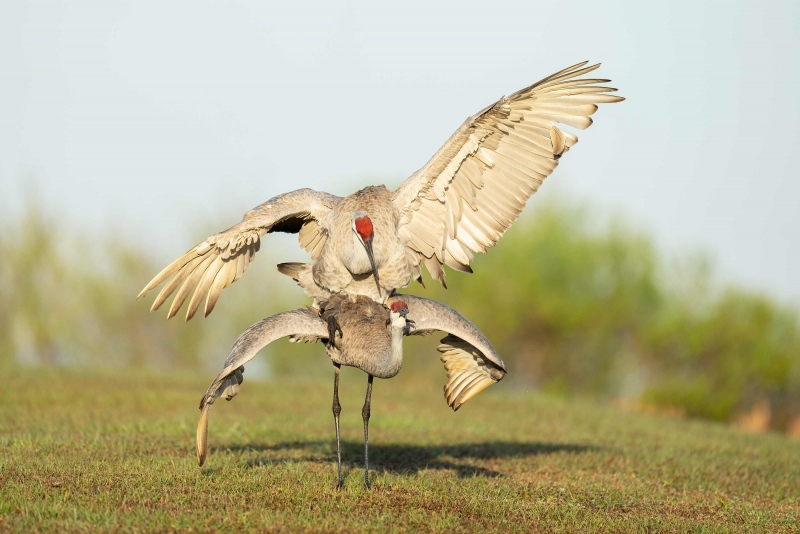
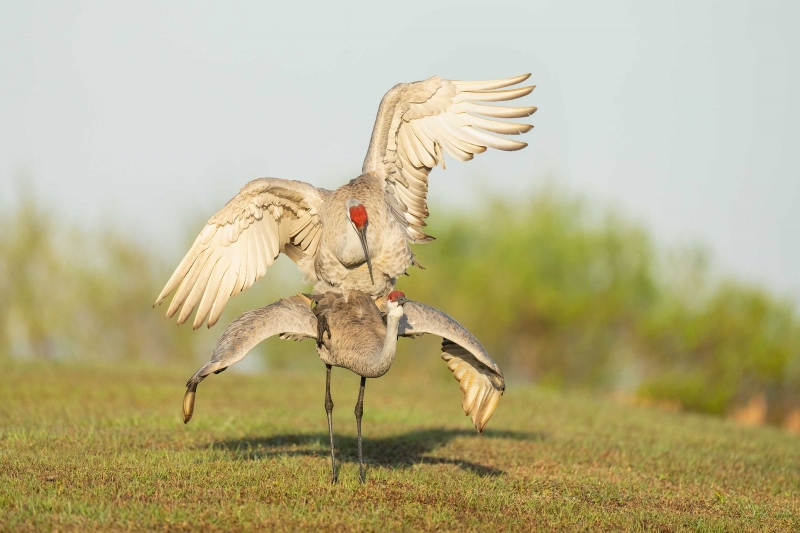
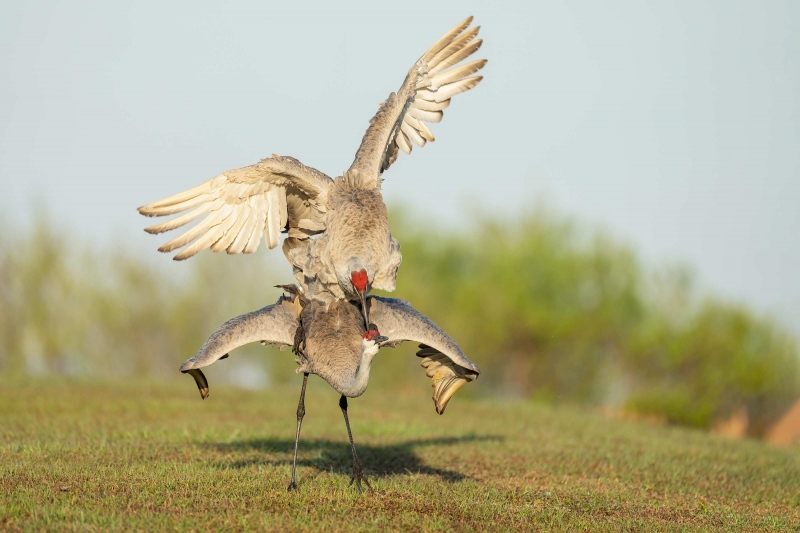
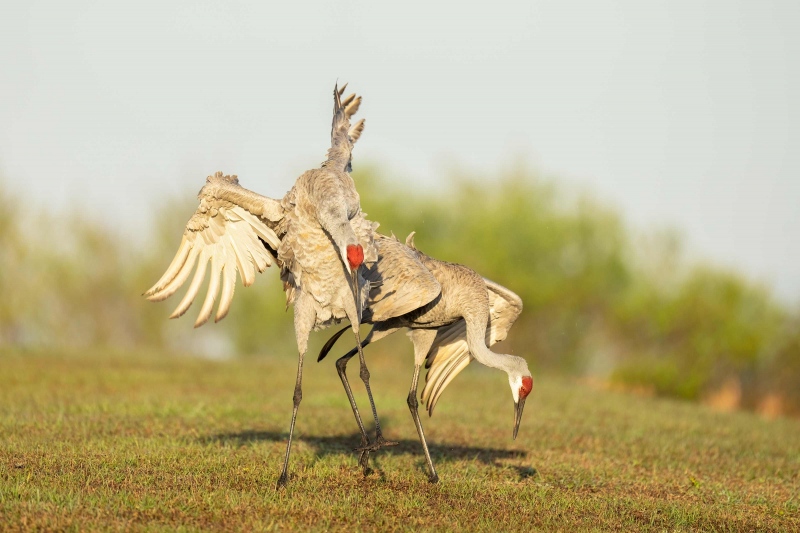
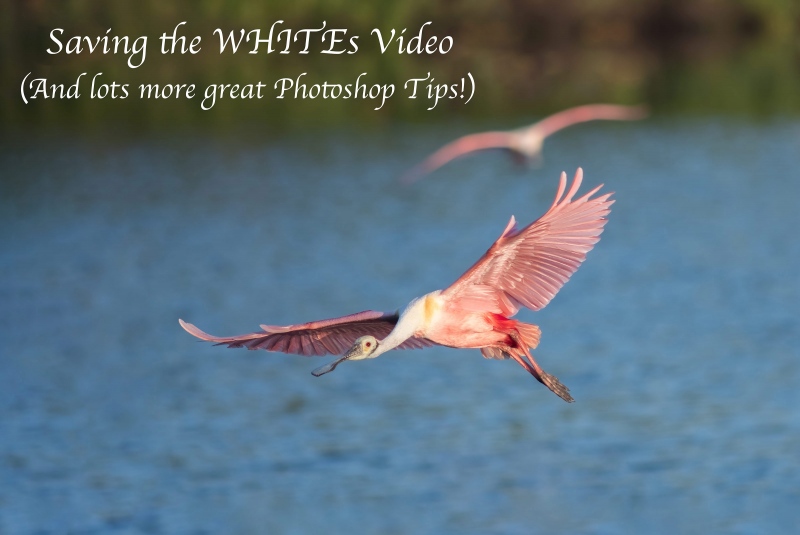













Hi Artie, the right place at the right time, and just in time, eh. All great images, but image #2 is my pick. I like the way the foot is spread out behind the females head. All in all it is just a wonderful image!
Artie
Not many people if ever get to see the amazing things in nature and the images today tell the story, while it is hard for me to pick just one as there all amazing I am going with image #2 yo can see both feet of the male and his left foot looks as if he’s going to grab her head but just getting his position I’m sure. When I look at the pictures on my 27″ the detail is beautiful. The eyes are engaging in the photos when on the 27″ screen.
Image #5 is yet another story teller as the male grabs the females head as waterfowl down the same thing interesting!
Image #6 the finish as I bet they danced a little as well.
Thank you for the beautiful story today and how lucky to have been there to see this, a minute later and you would have missed it all.
I envy that your minutes away from all the action and beautiful parts of nature! I too would be taking part of this everyday when allowed to feel and see the love right in your backyard!
Always with love b